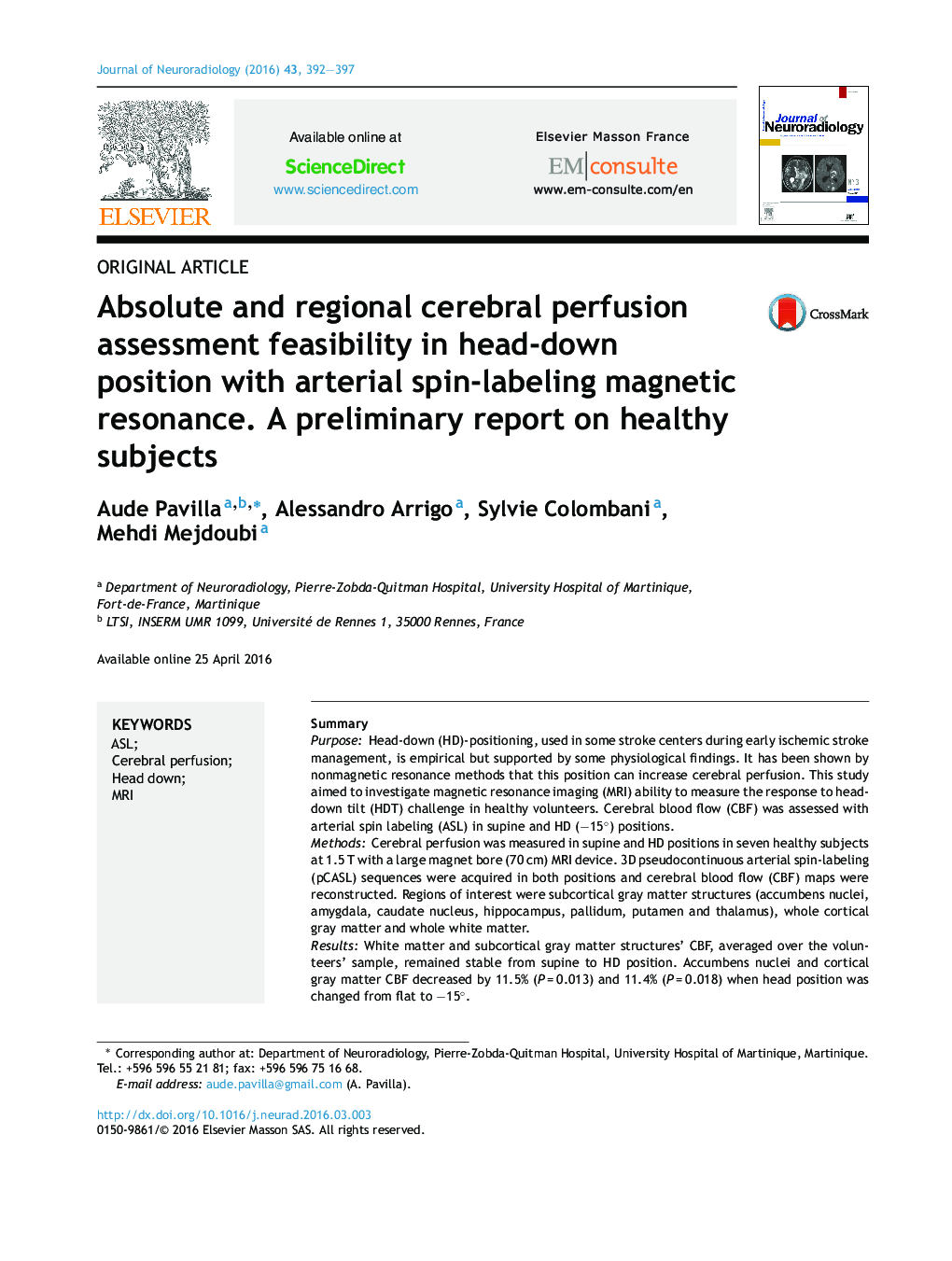| Article ID | Journal | Published Year | Pages | File Type |
|---|---|---|---|---|
| 5726941 | Journal of Neuroradiology | 2016 | 6 Pages |
SummaryPurposeHead-down (HD)-positioning, used in some stroke centers during early ischemic stroke management, is empirical but supported by some physiological findings. It has been shown by nonmagnetic resonance methods that this position can increase cerebral perfusion. This study aimed to investigate magnetic resonance imaging (MRI) ability to measure the response to head-down tilt (HDT) challenge in healthy volunteers. Cerebral blood flow (CBF) was assessed with arterial spin labeling (ASL) in supine and HD (â15°) positions.MethodsCerebral perfusion was measured in supine and HD positions in seven healthy subjects at 1.5 T with a large magnet bore (70 cm) MRI device. 3D pseudocontinuous arterial spin-labeling (pCASL) sequences were acquired in both positions and cerebral blood flow (CBF) maps were reconstructed. Regions of interest were subcortical gray matter structures (accumbens nuclei, amygdala, caudate nucleus, hippocampus, pallidum, putamen and thalamus), whole cortical gray matter and whole white matter.ResultsWhite matter and subcortical gray matter structures' CBF, averaged over the volunteers' sample, remained stable from supine to HD position. Accumbens nuclei and cortical gray matter CBF decreased by 11.5% (P = 0.013) and 11.4% (P = 0.018) when head position was changed from flat to â15°.ConclusionsRegional CBF assessment, especially in HDT, is challenging with most perfusion techniques because of ionizing radiations, inherent limitations and logistical considerations. This preliminary report presents a noninvasive technique assessing regional and absolute cerebral blood flow changes in response to posture change. It can lead to further clinical investigations for a better understanding of cerebral perfusion.
